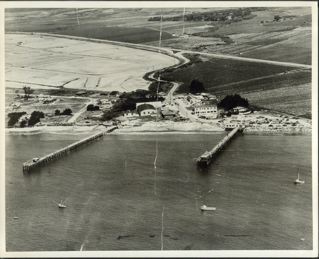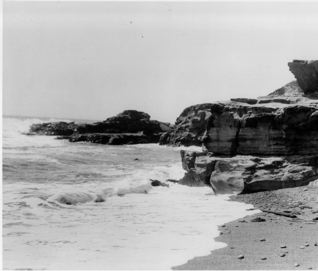All along Paul Pane had been amused that officials could not find him. No wonder. Since the 1924 raid at Ano Nuevo, south of Pescadero, Pane had been working in a restaurant located directly across the street from the San Francisco Prohibition office.
But Paneâs luck ran out when police recognized him while he was traveling through Los Angeles. Brought back to San Francisco, Pane, along with his partner, Tom Murphy, was indicted on conspiracy to violate the Prohibition Act and IRS laws.
Now the former intrepid bootleggers prepared to face trial in federal court in 1926.
At the trial, South Coast farmer J.F. Steele testified that Paul Pane and Thomas Murphy first visited him in 1923. At that time Steele agreed to load contraband liquor at $1 a case and that he did so on several occasions. Each time Pane and Murphy supervised the operation.
âTo save my hide, I made a statement to Prohibition Director Rutter that my place was used as a landing for illegal liquor,â? explained Steele who admitted he knew he was violating the law.
Steele also testified that prior to the 1924 raid, hijackers came to his ranch and bound and gagged him., threatening to throw him over the cliff unless he revealed the hiding place of eight barrels of whiskey. He refused to cooperate but changed his mind after his wife was kidnapped, leading the rogues to the whiskey.
Teamster Joseph Soto had worked at the Ano Nuevo ranch during the raid by Prohibition Director Rutter. Arrested along with Steele, Soto agreed to be a government witness. But when Joe Soto took the stand in federal court, he was suddenly and inexplicably unable to identify the defendants, Paul Pane or Tom Murphy.
The jury deliberated for an hour-and-a-half before returning with guilty verdicts on all the indictments. Paul Pane and Tom Murphy were each sentenced to two year prison terms.
By that time, Pane and Murphyâs boss, Joe Parente, the king of all the Pacific Coast rumrunners, was also a hunted man. After a fierce gun battle with Prohibition agents on present-day Skyline Blvd. in 1927, Parente was arrestedâbut he jumped bail, heading north to the safety of his lavish Vancouver, British Colombia hotel suite.
A year later, during a violent argument, an associate shot Joe Parente.



